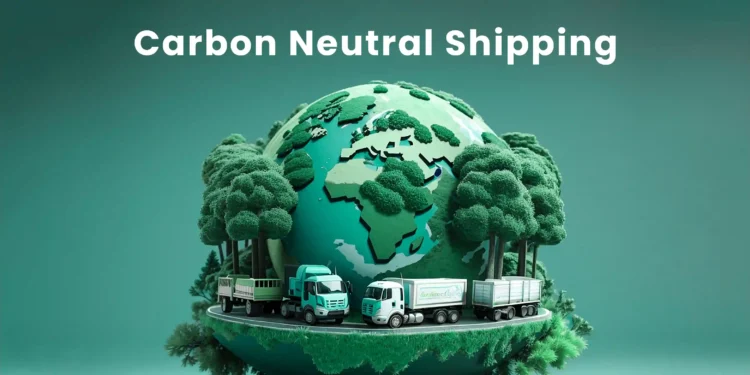Carbon neutral shipping refers to the concept of offsetting carbon emissions generated during the transportation of goods by implementing strategies that balance out or negate these emissions. This approach is crucial in addressing the environmental challenges posed by the shipping industry, including air and water pollution, greenhouse gas emissions, and marine ecosystem degradation.
How Carbon Neutral Shipping Works
Carbon neutral shipping operates on the principle of carbon offsetting, wherein companies compensate for their carbon emissions by investing in environmental projects that reduce or capture an equivalent amount of carbon elsewhere. Additionally, sustainable practices such as optimizing shipping routes, utilizing eco-friendly fuels, and implementing energy-efficient technologies play a vital role in achieving carbon neutrality.

Benefits of Carbon Neutral Shipping
Join carbon neutral shipping offers a myriad of benefits, both environmental and economic. By reducing carbon emissions, companies contribute to mitigating climate change and preserving natural ecosystems. Moreover, adopting sustainable practices enhances corporate social responsibility, fostering positive brand reputation and customer loyalty. From a competitive standpoint, companies that prioritize carbon neutral shipping gain a strategic advantage in the market, attracting environmentally conscious consumers and investors.
Challenges and Solutions

While the transition to carbon neutral shipping presents numerous opportunities, it also entails challenges, particularly in terms of cost implications and technological limitations. However, innovative solutions such as the development of renewable energy sources, advancements in propulsion systems, and collaborative efforts among industry stakeholders are paving the way for overcoming these obstacles and accelerating the adoption of sustainable shipping practices.
The Future of Carbon Neutral Shipping
Exciting developments and trends are changing the shipping industry to become more sustainable in the future of carbon-neutral shipping. The growing popularity of delivery trucks with no emissions is something to be careful about. Businesses are spending more money on self-sufficient, hydrogen-powered, and electric cars to lower transportation-related carbon emissions.
The supply chain business faces a revolution because of blockchain technology, which makes transactions transparent and transparent. With the use of this innovation, businesses can monitor the environmental effects of their shipping procedures, ensuring sustainability and responsibility throughout the supply chain.

Also, if businesses work to reduce their carbon impact, developments in sustainable packaging solutions are gaining popularity. Reusable packaging solutions and biodegradable materials are just two examples of the innovative ways businesses are looking to reduce the waste and environmental effects of shipping.
The future of carbon neutral shipping is bright when businesses prioritize sustainability and satisfy customer requests for environmentally friendly logistics and delivery methods by implementing these trends and innovations.
FAQS
To effectively balance out the carbon footprint of shipping activities, carbon neutral shipping is the process of balancing carbon dioxide emissions generated by transporting products by selecting initiatives that reduce or balance an equivalent amount of greenhouse gas emissions.
The process of analysing the carbon emissions produced during the transportation of goods and balancing them with investments in carbon offset initiatives is how carbon neutral shipping works. By reducing or balancing a comparable quantity of greenhouse gas emissions, these efforts successfully balance out the carbon footprint related to shipping operations.
No, shipping that is carbon neutral doesn’t usually take longer. It involves investing in carbon offset projects that reduce carbon emissions, which has no impact on the efficiency or speed of shipping.
Conclusion
In conclusion, implementing carbon neutral shipping processes is an important first step in building a future that is both environmentally harmless and sustainable. Businesses have the potential to make a major contribution to the prevention of climate change and the conservation of the earth for future generations by reducing the carbon emissions related to transportation.














